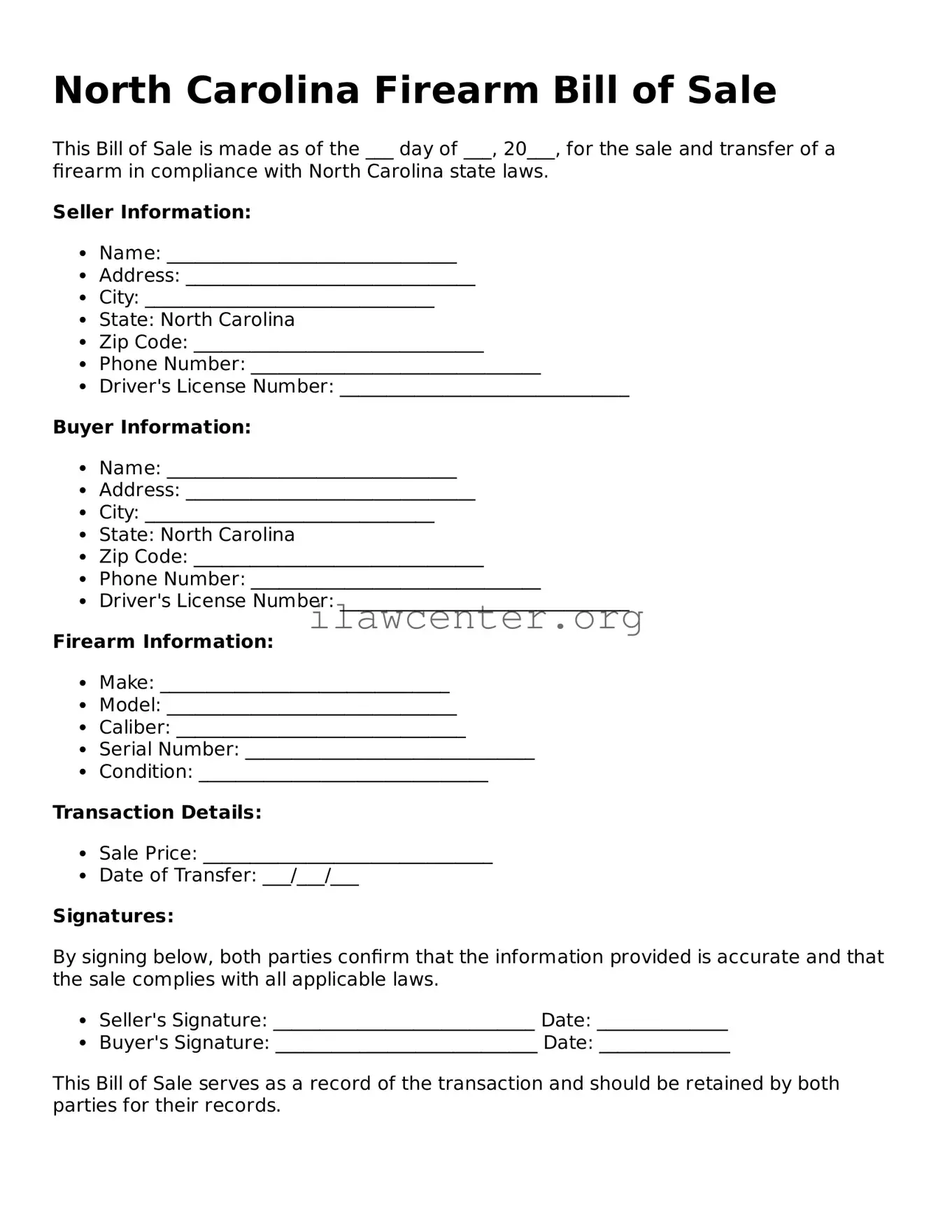Filling out the North Carolina Firearm Bill of Sale form is a critical step in the process of transferring firearm ownership. However, it is not uncommon for individuals to make errors that could lead to complications down the line. One common mistake is failing to provide complete information about the firearm being sold. This includes the make, model, caliber, and serial number. Omitting any of this information may lead to questions about the legitimacy of the transaction.
Another frequent error involves not including the personal information of both the buyer and the seller. It is essential to list the legal names, addresses, and phone numbers of both parties clearly. Inaccurate or missing details can create disputes or legal challenges in the future. Furthermore, some individuals overlook the requirement for both parties to sign the document. Without signatures, the bill of sale has no legal standing.
Many people also fail to date the form correctly. Not dating the transaction can lead to questions about when the ownership was transferred, which is particularly important if there are any legal issues or claims. Additionally, it is vital to ensure that the buyer is legally eligible to purchase a firearm. Failure to verify this can result in significant legal repercussions for both the buyer and the seller.
Another mistake involves not keeping a copy of the completed bill of sale. Failing to retain a copy can lead to difficulties in proving the transaction took place, especially if ownership of the firearm is ever questioned. Many individuals should be aware that these records can serve as a crucial reference in the event of future transactions or disputes.
Sometimes, individuals mistakenly think they do not need to check local and state laws regarding firearm sales. Each jurisdiction may have specific requirements that differ from the general guidelines provided for the bill of sale. It is wise to do thorough research to ensure compliance with all applicable regulations.
Moreover, some sellers may inadvertently misrepresent the condition of the firearm. Whether a gun is new, used, or in need of repair, providing an accurate description can prevent misunderstandings and potential legal issues later on. Full transparency helps in maintaining trust between the parties involved.
Additionally, neglecting to include terms about the sale can be problematic. This may include payment methods, return policies, or warranties. Clearly outlining these terms can protect both parties and help avoid future conflicts.
Finally, individuals sometimes do not seek legal advice when necessary. If there are uncertainties about how to fill out the form or if the transaction involves unusual circumstances, consulting with a legal professional can provide invaluable guidance. Avoiding these common pitfalls can contribute to a smoother and more secure transfer of firearm ownership.
